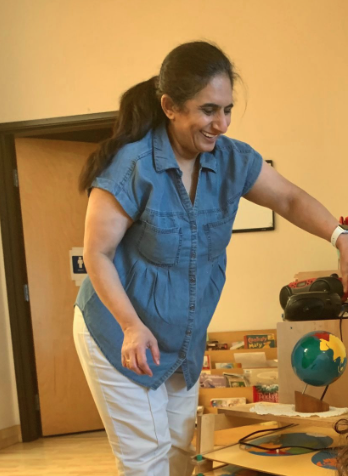
How to Develop Montessori Routines at Home
Whether you are looking to create a routine for your homeschooled child or you are finding yourself with a child who cannot attend school for the next few weeks, a routine is always helpful in creating a calm environment for your children.
A Montessori education offers children a way to explore the world around them at their own pace. Focusing on the child, the approach fosters self-motivated growth throughout every area of their development. While many people have heard of this approach, most are unaware of how easy it is to develop Montessori at home.
The timing of your schedule will be different based on what works for your family, but all Montessori schedules will include these similar things.
Play Times
The typical Montessori daily routine home could begin with some free play. This term has multiple meanings in Montessori education. Most of the time, the children should be facilitating the play, either together or alone, while the parent watches or engages with the children. This time could also be used to introduce a lesson or new activity, or for the parent to get some morning work done while the children play independently. It is really up to you and what works for your family, on that particular day. The most important thing to remember is to be flexible and to work with the temperament of your child at that moment.
While play is an important aspect of Montessori at home, so is rest time. For one hour, select a few quiet spaces for your child to choose from to rest or nap. This time is important for both you and your child to recharge your batteries for the afternoon.
A set time for independent play is equally important, as it helps your child to learn to think and do for themselves. This could include play time with toys, reading a book, using some sort of building block, or even a little bit of educational television time. After all, some situations of at-home education are unexpected and a little television could be calming for your child.
To help this approach work effectively in your home, you may want to place items in low-hanging or easily reachable bins so your child can get things out for themselves. Items should also be separated so that your child can easily find what they are looking for without having to look through a large number of toys.
To that end, the Montessori approach suggests that toys should be rotated out every few weeks to help stop boredom. This way toys seem new, even when they are not.
Get Outside
It is important to get outside at least once a day and explore. Whether you go to a playground or are avoiding them for the moment, there is still plenty of green space! Get out and go for a hike, run through a field, or challenge your children to find certain objects as they walk around town.
Is the weather keeping you down? Dress appropriately and go with it. Wear your rain boots and jump in the puddles, or put your snowsuit on and sled down a hill. If you are simply unable to go outside, whether it be illness or really bad weather conditions, incorporate some movement time into your indoor life with a dance party or creating an obstacle course.
Eating
Children love to help and mealtime should be no different. Give them jobs to do and let your “sous chef” make their own meals as much as they are able to.
In addition to meal preparation, the Montessori philosophy suggests that snacks should be kept on a low shelf in both the pantry and refrigerator so your child is able to access them for themselves. A small pitcher may be worth the purchase so that your child can learn to pour liquids for themselves throughout the day.
If you would like more information about Montessori education, contact our team at American Montessori Campus today!
Learn more:
Best Montessori Holiday Routines
How to Help Your Child Adapt to a New Sibling
